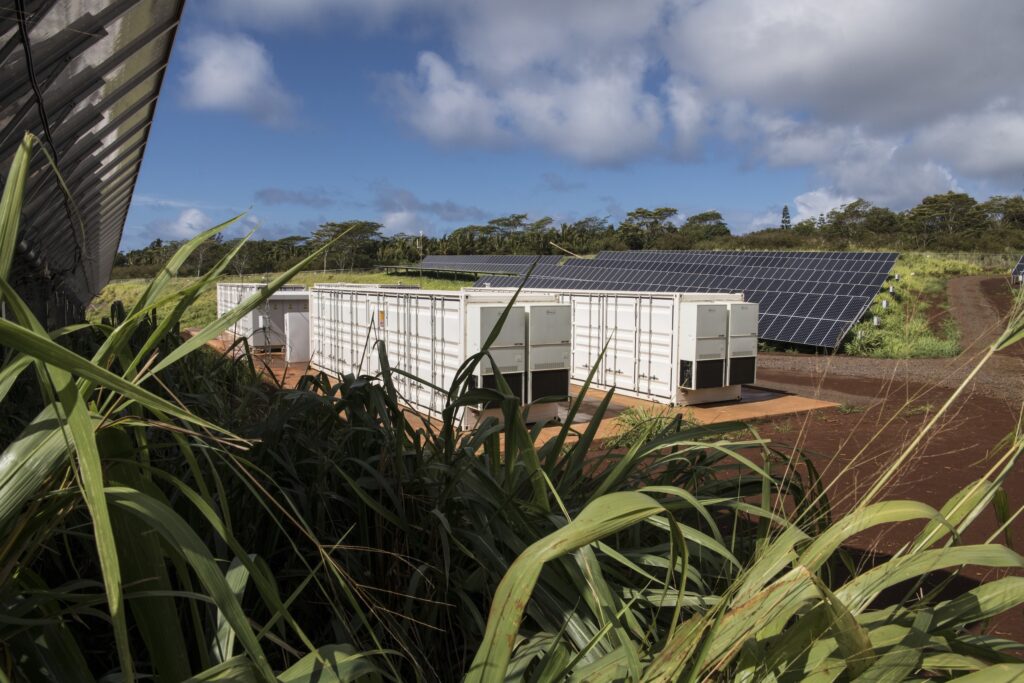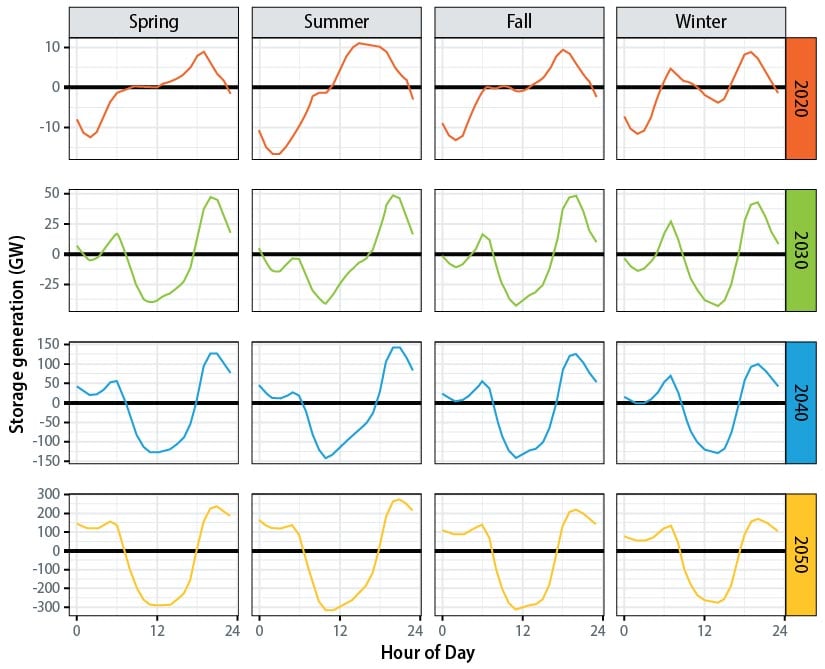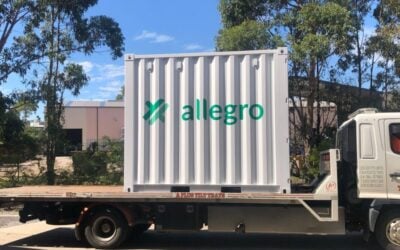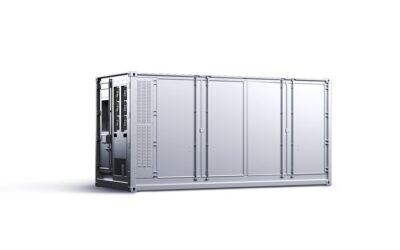
Energy storage will play an important role in US power systems between now and 2050, offering the opportunity to displace fossil fuels with low-cost renewable energy and balancing supply and demand across multiple regions.
According to a new report from the US National Renewable Energy Laboratory (NREL), energy storage’s ability to store overgeneration from solar and wind power plants means it can contribute to the energy mix when most needed, even in the most conservative scenarios of variable renewable energy deployment.
Enjoy 12 months of exclusive analysis
- Regular insight and analysis of the industry’s biggest developments
- In-depth interviews with the industry’s leading figures
- Annual digital subscription to the PV Tech Power journal
- Discounts on Solar Media’s portfolio of events, in-person and virtual
‘Grid operational impacts of widespread storage deployment’ is the sixth report produced through NREL’s Storage Futures Study series, published earlier this month and freely available.
NREL researchers modelled a series of scenarios for possible energy storage deployment through to 2050, including a reference case, a low-cost battery scenario, low-cost solar PV, high natural gas cost combined with low-cost batteries and a zero carbon scenario.
Even in the reference case the amount of energy storage on the grid rises to 213GW by 2050 from about 23GW installed today — with nearly all of today’s installations pumped hydro, despite the rapid rise of lithium-ion starting to account for significant numbers. In the low-cost battery scenario, that figure rises to 384GW / 1,792GWh and in the zero carbon scenario as much as 932GW / 6,097GWh.
The multiple applications that energy storage can serve, from ancillary grid services to energy arbitrage and capacity services, all play their part, but as the grid moves to higher renewable energy penetration, the value of energy arbitrage and capacity really start to show.
Energy storage as a peaking capacity asset — storing energy produced during times when renewable energy is cheap and abundant and then outputting it to the grid when demand is high – is a particularly valuable application and will grow to be more so.
It is also important to note that increased energy storage deployment can result in fossil fuel generators having to be used less frequently and avoiding start-ups of polluting thermal power plants can have beneficial impacts on public health, especially for those living nearest to those power plants.

In fact energy storage can increase efficiency of almost all power generation assets: increasing the utilisation of solar and wind plants which produce energy at low marginal cost and having the opposite effect on thermal generators.
Synergies with PV are more consistent than for wind, the NREL researchers found, due to solar’s more predictable daily production profile. Wind can be in longer periods of generating more or less power than is needed, which makes it trickier to integrate.
NREL’s experts conceded that modelling the power system and accounting for higher storage and renewables deployment is a complex business, as is balancing the grid using those resources, but that it is entirely feasible.
“We once again find that the potential future energy system with large quantities of energy storage could successfully balance load 24/7. On top of that, we find power systems with high levels of energy storage operate more efficiently by storing otherwise unused renewable energy to displace costly generation from other sources,” the study’s principal investigator Jennie Jorgenson said.
The study focused on the deployment of diurnal, or daily, storage with durations up to 12 hours, although the NREL team said there may would be benefits to looking further into the role of longer-duration storage. It also noted that the relationship between storage and transmission infrastructure is complex and warrants further investigation.
The major need for energy storage, as a peaking capacity asset, will be consistent throughout the year, but it will be most valuable for about 10 hours of every year when the grid endures its highest peaks in demand. As more fossil fuel-fired peaking generation retires, that value grows.
NREL’s methodology for the report included use of the laboratory’s flagship power sector capacity planning model, called the Regional Energy Deployment System (ReEDS), and combined it with energy market simulation and forecasting software PLEXOS.
ReEDS is publicly available to help the modelling and analysis community.
NREL’s Jennie Jorgenson said energy storage technology’s “key role during peak demand when the power system needs energy and capacity the most” remains consistent “across all scenarios and years through 2050”.
The full ‘Grid operational impacts of widespread storage deployment’ report can be found here on NREL’s website.






